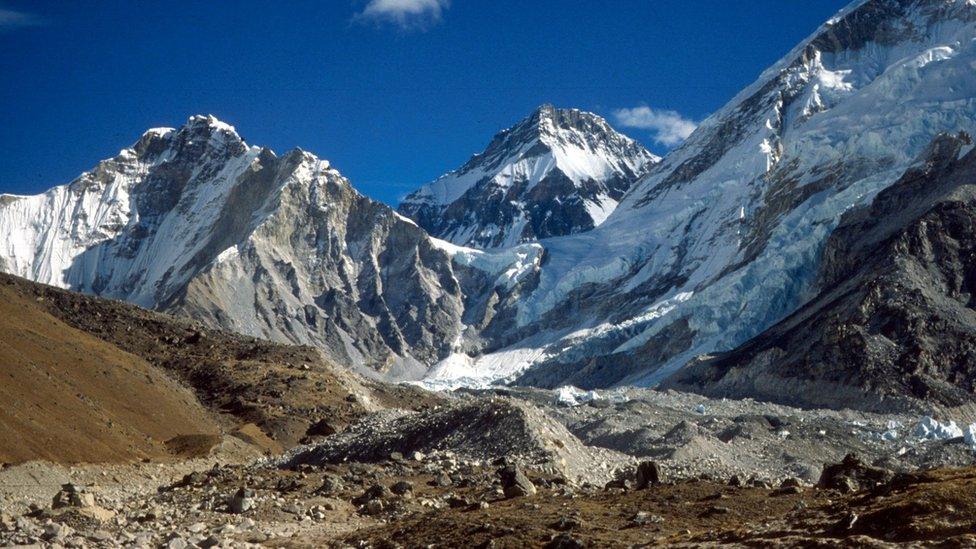Scientists work out how rain can 'shape' mountains
- Published
- comments

Can rain really 'shape' mountains?
Well, a group of scientists led by the University of Bristol, has discovered a new technique to help them work out just how rain can change our mountains, rivers and valleys.
As part of their research the scientists studied the central and eastern areas of the Himalaya mountain range.
This area is one of the most studied landscapes in the world, for looking at erosion - which is the name for the process that happens when the surface of the Earth gets worn down.
The scientists say their new research could help to pave the way for forecasting the impact of climate change on landscapes and, in turn, human life.
Lead author Dr Byron Adams, Royal Society Dorothy Hodgkin Fellow at the university's Cabot Institute for the Environment, said: "It may seem intuitive that more rain can shape mountains by making rivers cut down into rocks faster.
"But scientists have also believed rain can erode a landscape quickly enough to essentially 'suck' the rocks out of the Earth, effectively pulling mountains up very quickly.
"Both these theories have been debated for decades because the measurements required to prove them are so painstakingly complicated."
So, how did they work it out?
The researchers used cosmic clocks within grains of sand, to help them to measure how fast the rivers were eroding the rocks beneath them.
"When a cosmic particle from outer space reaches Earth, it is likely to hit sand grains on hill slopes as they are transported toward rivers," said Dr Byron Adams, the lead author of the study.
"When this happens, some atoms within each grain of sand can transform into a rare element.
"By counting how many atoms of this element are present in a bag of sand, we can calculate how long the sand has been there, and therefore how quickly the landscape has been eroding.
"This model allows us for the first time to quantify how rainfall affects erosion rates in rugged terrain," said Dr Adams.
The scientists say their findings are an important lesson for how people use, and build on land, as well as a way to give warnings about potential landslides or floods.
- Published24 August 2011
- Published14 March 2019
- Published29 May 2013
